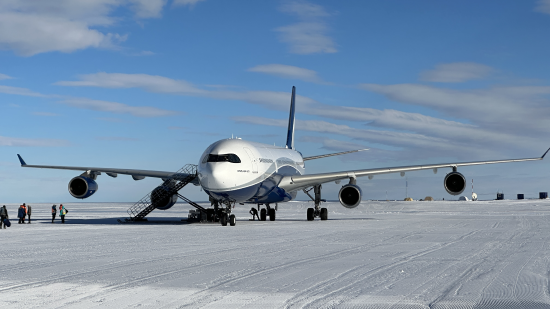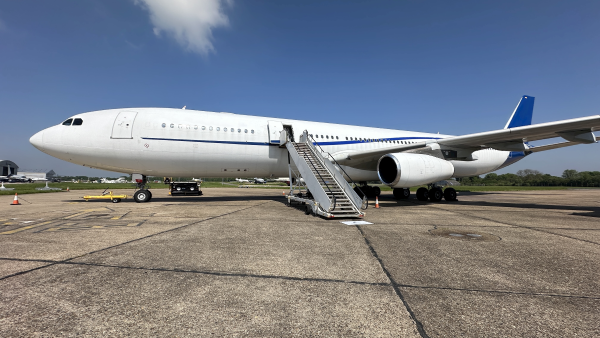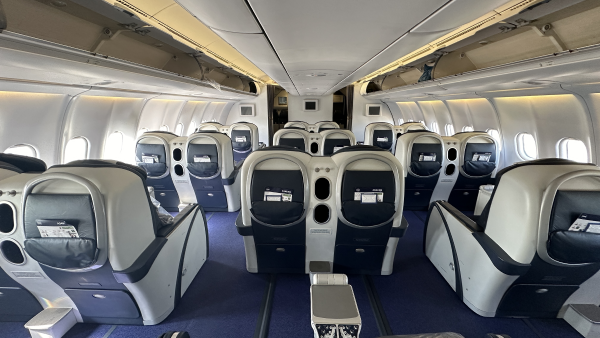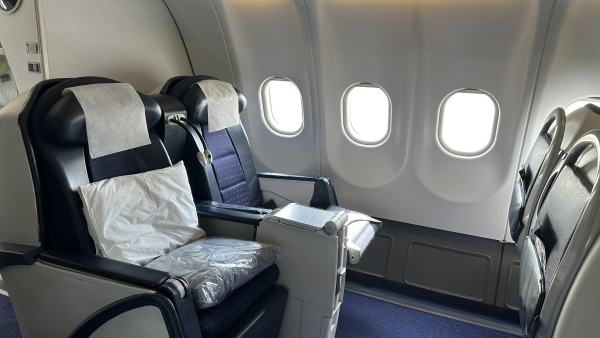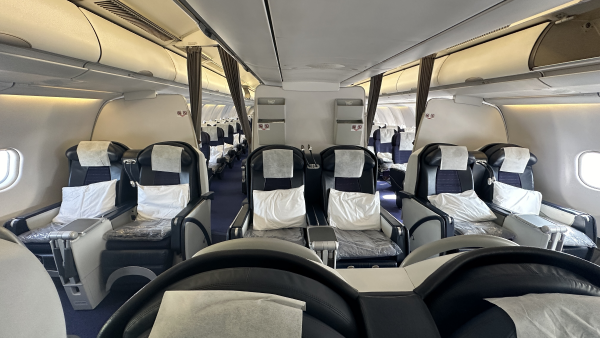AIRBUS A340-200/300/500/600
- Passengers 261-295
As part of the second generation of widebody aircraft, the first variants in the A340 family revolutionised long-haul air travel and replaced aircraft like the B747-200 and L1011 Tristar. With a modern cockpit and ultra-efficient engines, the A340-200 and -300 were later superseded with more powerful Rolls Royce Trent engines, in the release of the A340-500 as well as a lengthened version, the -600. Find out more about the legendary quadjet family with our guide.
About this aircraft
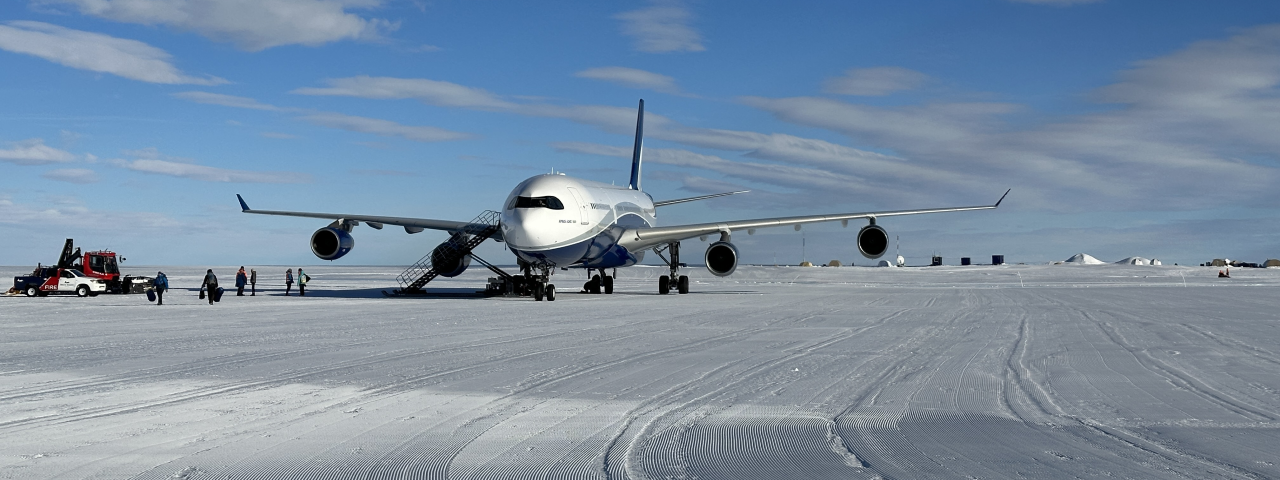
One of the most legendary airliners ever made, the Airbus A340 played a crucial role in making long-haul air travel more affordable and accessible. The baseline A340-200 featured a shorter fuselage, which, combined with four engines, offered record breaking range. Later, the A340-300 featured a stretched cabin and exchanged range for capacity, before the A340-500 used the latest generation engines to enhance range even further, journeying between Singapore and New York with ease. A final stretch created the longest aircraft in the world to date, with the A340-600, which rivalled the Boeing 777-300.
- One of the most legendary airliners ever made, the Airbus A340 played a crucial role in making long-haul air travel more affordable and accessible.
- The Airbus A340-300 has a large luggage hold, accommodating more than 30,000kgs of cargo and baggage, or well over 500 bags.
- Only 28 of the A340-200 were made before it was discontinued in 2008, now flying as Presidential Airliners.
- Production of the more successful A340-300 ended five years later in 2013, with many of the 200 built still available on the charter market today, due to its versatility and low costs.
- After its success in the scheduled airline market, the A340 has found its niche in the charter market, with business class versions with just lie flat beds highly sought after by those in sports, film and TV, and high end events.
Interior design

The A340-200/300/500/600 all have a quiet, aerodynamic cabin, with wider seats providing more personal space than competitors even in economy class. The -200 typically seats 261 passengers in a three-class configuration or 300 passengers in two classes, compared to 295 or 335 in the longer -300. Four-abreast first class and six-abreast business class layouts give passengers a guaranteed window or aisle seat.
Both variants have flexible cabins that can incorporate a wide range of customised interiors, including modern in-flight entertainment and media centres. Onboard facilities are extensive, with up to nine fully enclosed lavatories and seven galleys for preparing food and beverages.
Below is an example of a typical configuration found onboard the Airbus A340.

Interesting facts to learn before you fly
- The A340-200 and -300 were Airbus’ biggest aircraft when they launched. The first -300 off the production line was the 1,000th Airbus built.
- A modified A340-200 completed the first non-stop flight between Europe and New Zealand in 1993, flying from Paris to Auckland in 24 hours and 11 minutes.
- The A340 can access some of the world’s most challenging destinations and has been used to fly scientists and tourists to Antarctica.
- Commonality across Airbus fly-by-wire aircraft significantly reduces training and maintenance costs, ensuring the A340 holds its value.
- Offering a far greater range with a reduced payload, these days the A340 is mostly used as a private aircraft. VIP versions have been used to transport heads of state such as the Qatari royal family.
- Several airlines used the A340 as a cargo plane when passenger demand plummeted during the Covid-19 pandemic. Seats were removed to make room for cargo containers to deliver essential goods such as medical supplies and personal protective equipment.
Technological features
The A340-200 and -300 are powered by four wing-mounted CFM International engines with three thrust options: CFM56-5C2 (31,200 lbs), CFM56-5C3 (32,500 lbs) and CFM56-5C4 (34,000 lbs). These give the aircraft enough thrust to take off fully loaded in under three miles.
The A340 has the same flight deck as the A320 and A330, including side-stick controllers and a six-screen electronic flight instrument system (EFIS). It also shares the A330’s digital fly-by-wire flight control system, basic airframe, systems, fuselage and wing.
History
Following the success of the A300, Airbus began developing an entire family of airliners to compete with American giants such as Boeing and McDonnell Douglas. In 1987 they launched the Airbus A340, a new-generation long-haul quadjet that could cover transoceanic routes unrestricted by ETOPS (extended-range twin-engine operational performance standards).
The A340 debuted with two variants: the A340-200 and the A340-300. The -200 sacrificed seating capacity for greater range with a shorter fuselage, while the longer -300 could carry more passengers. The improved A340-300E entered service in April 1996, followed by the longer-range A340-500 and the stretched, higher-capacity A340-600 in the early 2000s. Airbus ceased production of the A340 family in November 2011, as its popularity waned in favour of newer twinjets with lower operating costs such as the Boeing 777.
Manufacturer
Airbus was established in 1970 as a European consortium to compete with American giants like Boeing, McDonnell Douglas and Lockheed. Its first aircraft, the A300, was a success; but it was the A320 that cemented Airbus’ status as a major player in the aircraft market. Launched in 1987, the narrow-body airliner went on to become the world’s best-selling jet.
Airbus became a joint stock company in 2001, with the European Aeronautic Defence and Space Company (EADS) initially holding an 80% share before later becoming the sole shareholder. Two years later, Airbus opened its first engineering facility outside its home countries in Russia, which proved a huge success for the brand’s globalisation strategy.
Airbus received record-breaking orders worth $72.2 billion at the 2011 Paris Air Show. EADS rebranded as Airbus Group in 2014, before merging with its largest division, Airbus SAS, three years later to form a single brand. Today Airbus is the world's largest airliner manufacturer and has designed, built and sold more than 13,500 aircraft.
Cost
Prices for a pre-owned Airbus A340-300 range from around $1 million to $1.5 million (USD).
Charter rates
Charter rates for aircraft in the Airbus A340 family vary depending on the length of the journey you have planned, as well as the airports you decide to fly in and out of.
